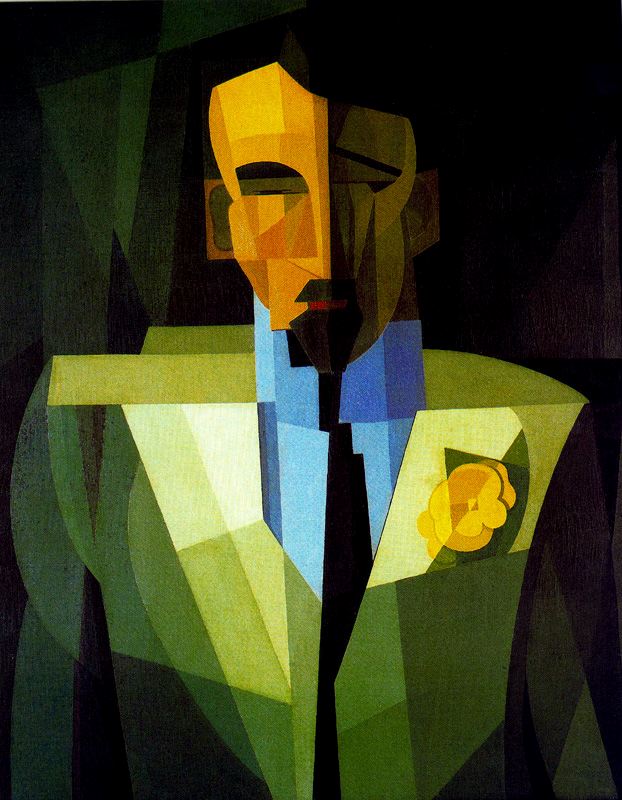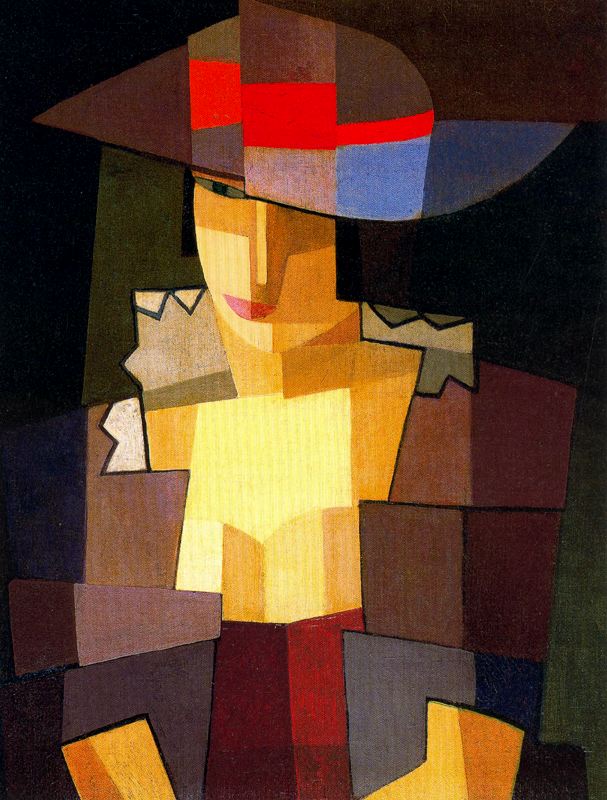Quinteto by Emilio Pettoruti.
Emilio Pettoruti:
the Argentine cubist who sparked an artistic revolution.
Complete with the past simple:
Emilio Pettorutti ______(born) in the city of La Plata, on October 1, 1892. He ______(be) the son of Italian immigrants and _______(start) as a self-taught artist. Encouraged by his grandfather, Emilio _______(enroll) in the School of Fine Arts in his hometown to improve himself. His first exhibition _______(be) at the Gath & Chaves store, one of the most visited by the upper class of Buenos Aires at the beginning of the 20th century.
Through a grant from the Argentine government, he _______(travel) to the Italian city of Florence to continue his plastic studies. There he_______( study ) the paintings of the great masters such as Pablo Picasso, Braque, Juan Gris and Filippo Marinetti and also of the futurist avant-garde.

El hombre de la flor amarilla
by Emilio Pettoruti.
In 1916 he ________(meet) Xul Solar with whom years later they would be the pioneers in the Argentine avant-garde. That same year he ________(exhibite) at the Gonelli Gallery, for the first time individually , an then in Milan and Rome (1922) and Germany (1923). Back in Buenos Aires, in 1924, he _____(hold) an exhibition at the traditional Witcomb Gallery. His works, decidedly avant-garde for the time,________(cause) great commotion among critics and the public.
Pettoruti_____(take)influence from cubism, futurism, constructivism, and abstraction but he _______(deny) painting in any of those styles in particular. Emilio Pettoruti is remembered as one of the most influential artists in Argentina in the 20th century for his unique style and vision.
 Pensierosa by Emilio Pettoruti.
Pensierosa by Emilio Pettoruti.
Answers:
Emilio Pettorutti was born in the city of La Plata, on October 1, 1892. He was the son of Italian immigrants and started as a self-taught artist. Encouraged by his grandfather, Emilio enrolled in the School of Fine Arts in his hometown to improve himself. His first exhibition was at the Gath & Chaves store, one of the most visited by the upper class of Buenos Aires at the beginning of the 20th century.
Through a grant from the Argentine government, he traveled to the Italian city of Florence to continue his plastic studies. There he studied the paintings of the great masters such as Pablo Picasso, Braque, Juan Gris and Filippo Marinetti and also of the futurist avant-garde.
Lady with green fan by Emilio Pettoruti.
In 1916 he met Xul Solar with whom years later they would be the pioneers in the Argentine avant-garde. That same year he exhibited at the Gonelli Gallery, for the first time individually, an then in Milan and Rome (1922) and Germany (1923). Back in Buenos Aires, in 1924, he held an exhibition at the traditional Witcomb Gallery. His works, decidedly avant-garde for the time, caused great commotion among critics and the public.
Pettoruti took influence from cubism, futurism, constructivism, and abstraction but he denied painting in any of those styles in particular. Emilio Pettoruti is remembered as one of the most influential artists in Argentina in the 20th century for his unique style and vision.
 Harlequin musical Harlequin musicalby Emilio Pettoruti. |

No hay comentarios:
Publicar un comentario